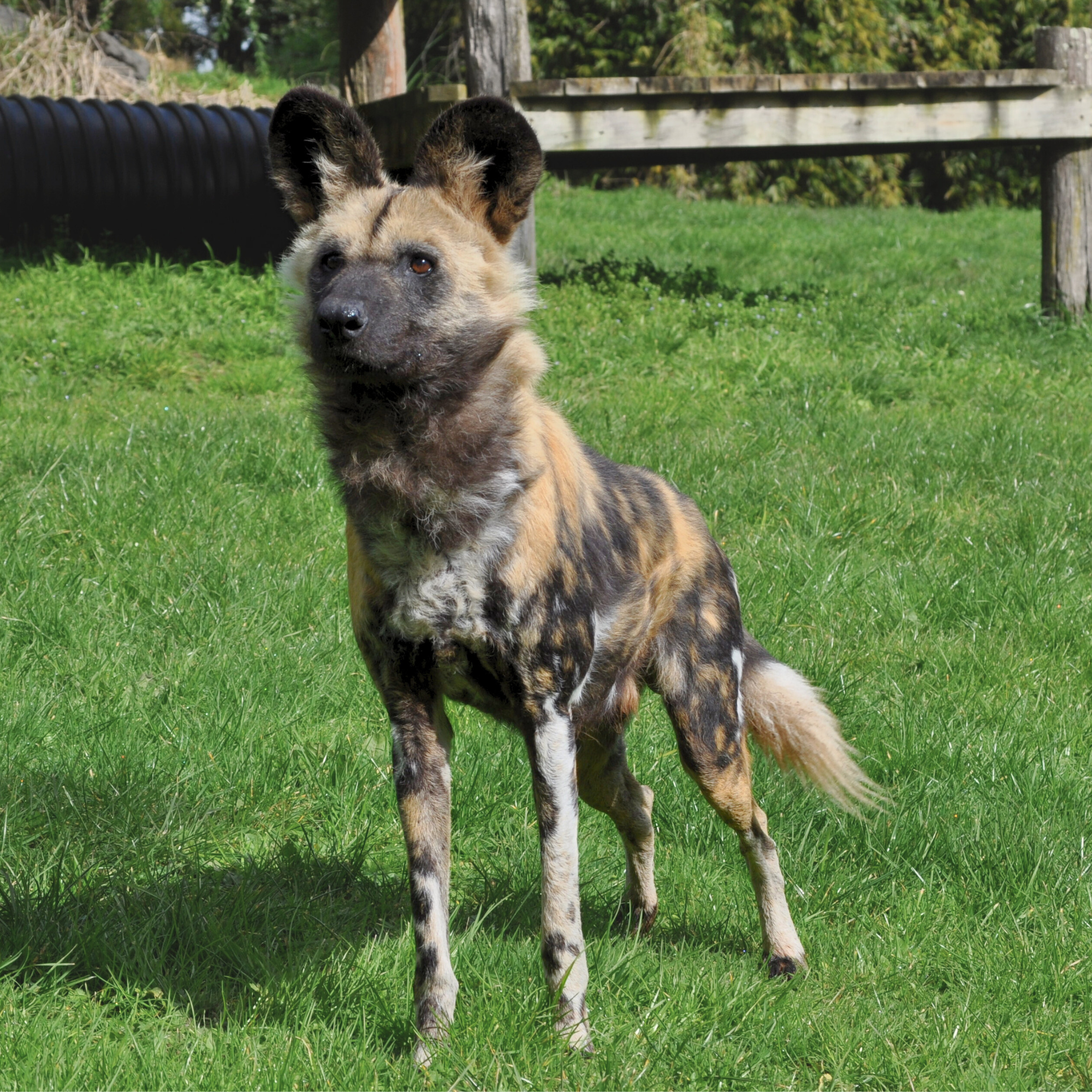African Wild Dog
Lycaon pictus (also known as Painted Hunting Dog)

Distribution:
Southern Africa
Habitat:
Plains, woodlands, savannah.
Diet:
Antelope, warthogs, wildebeest calves, rats and birds.
Gestation:
60-70 days, ten - twenty pups born
Longevity:
8 - 10 years in both the wild and captivity
Predators:
Human, lions, hyena; eagles may attack young
Conservation Status:
Endangered
General:
Notable for its patterned coat, each dog's pattern is unique except for the white tip of their tail, tan forehead and black muzzle. African Wild Dogs have very big ears, this gives them exceptionally good hearing and also helps keep them cool.
They communicate through tail wags, touch, and various vocalizations, including a howl to rally a pack of wild dogs, a short bark to signify alarm, and a bell-like sound that can be heard over long distances.
A social animal, they live in packs with 5 - 30 individuals. Generally only the dominant pair within the pack breed, all members of the pack are involved in caring for, feeding and teaching the offspring.
Fun fact: African Wild Dogs sneeze to vote on decisions within the pack! To decide whether or not to go hunt, the pack gathers and 'votes', if there are enough sneezes, the pack will likely move off and hunt. If not, they will stay and rest.
At Hamilton Zoo:
We have one African Wild Dog here at the zoo, you can see him opposite the tigers. Keep an eye out for his big ears poking out of the grass!
Males:
Romeo - 10/11/12
